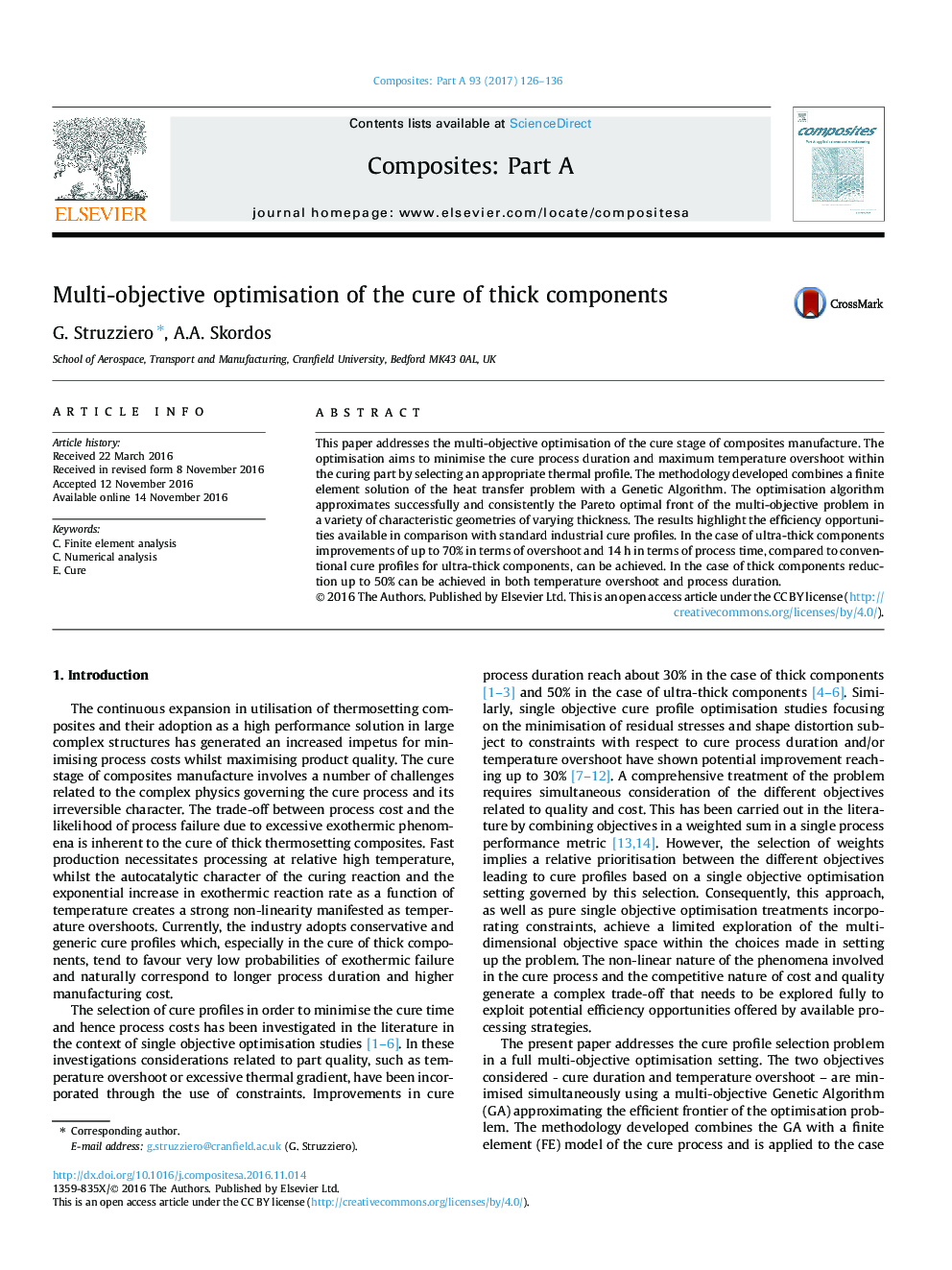| Article ID | Journal | Published Year | Pages | File Type |
|---|---|---|---|---|
| 5439664 | Composites Part A: Applied Science and Manufacturing | 2017 | 11 Pages |
Abstract
This paper addresses the multi-objective optimisation of the cure stage of composites manufacture. The optimisation aims to minimise the cure process duration and maximum temperature overshoot within the curing part by selecting an appropriate thermal profile. The methodology developed combines a finite element solution of the heat transfer problem with a Genetic Algorithm. The optimisation algorithm approximates successfully and consistently the Pareto optimal front of the multi-objective problem in a variety of characteristic geometries of varying thickness. The results highlight the efficiency opportunities available in comparison with standard industrial cure profiles. In the case of ultra-thick components improvements of up to 70% in terms of overshoot and 14Â h in terms of process time, compared to conventional cure profiles for ultra-thick components, can be achieved. In the case of thick components reduction up to 50% can be achieved in both temperature overshoot and process duration.
Related Topics
Physical Sciences and Engineering
Materials Science
Ceramics and Composites
Authors
G. Struzziero, A.A. Skordos,
